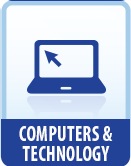|
This section contains 206 words (approx. 1 page at 300 words per page) |
Privileged instruction is an instruction (usually in machine code) that can be executed only by the operating system in a specific mode. (An instruction is a statement that is acted upon by any computer language.) Examples of where privileged instructions are used include operations involving input/output and memory management (the coordinated effort to provide sufficient memory to all processes of a computer system). The existence of privileged instructions is to specifically allow the operating system to perform certain operations that applications should not be allowed to perform. To allow for privileged instructions a "mode bit" is added into the computer's software to indicate one of two dual modes: monitor mode or user mode. The privileged instruction can only be executed when the microprocessor is running in monitor (or supervisor) mode, a mode that enables execution of all instructions. Thus, the operating system contains routines that execute these particular (privileged) instructions. The monitor mode is the normal operating state of computers. If an attempt is made to execute a privileged instruction in the user state, then the microprocessor does not execute the instruction. The user mode is the least privileged of the states, being the state from which all application programs run.
|
This section contains 206 words (approx. 1 page at 300 words per page) |


